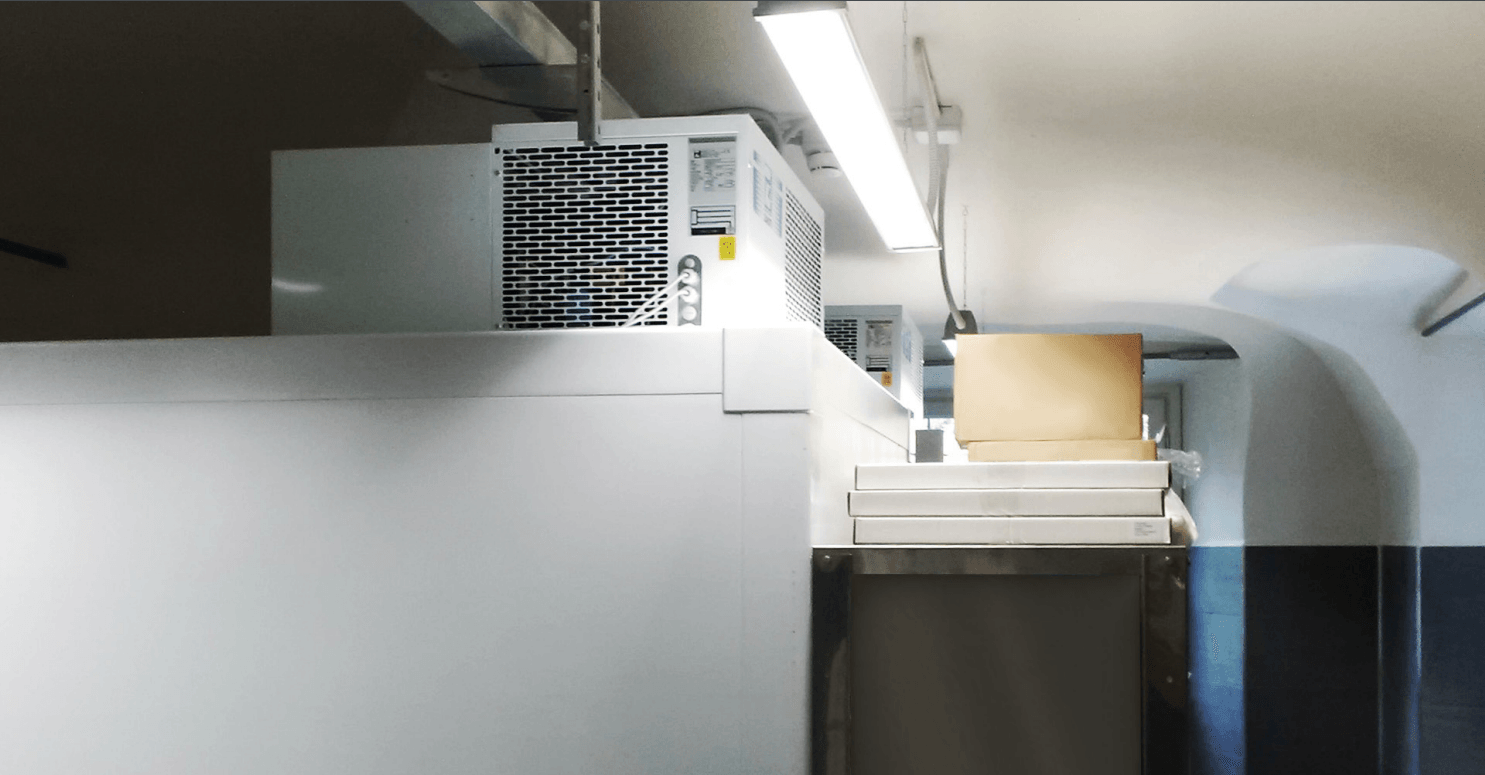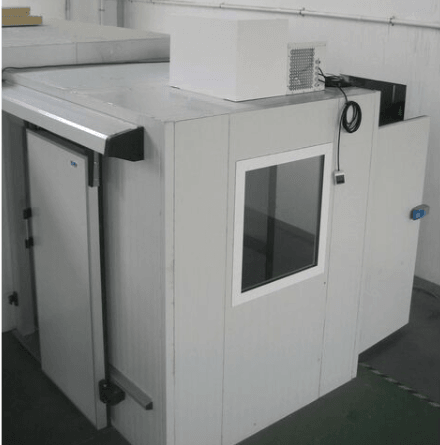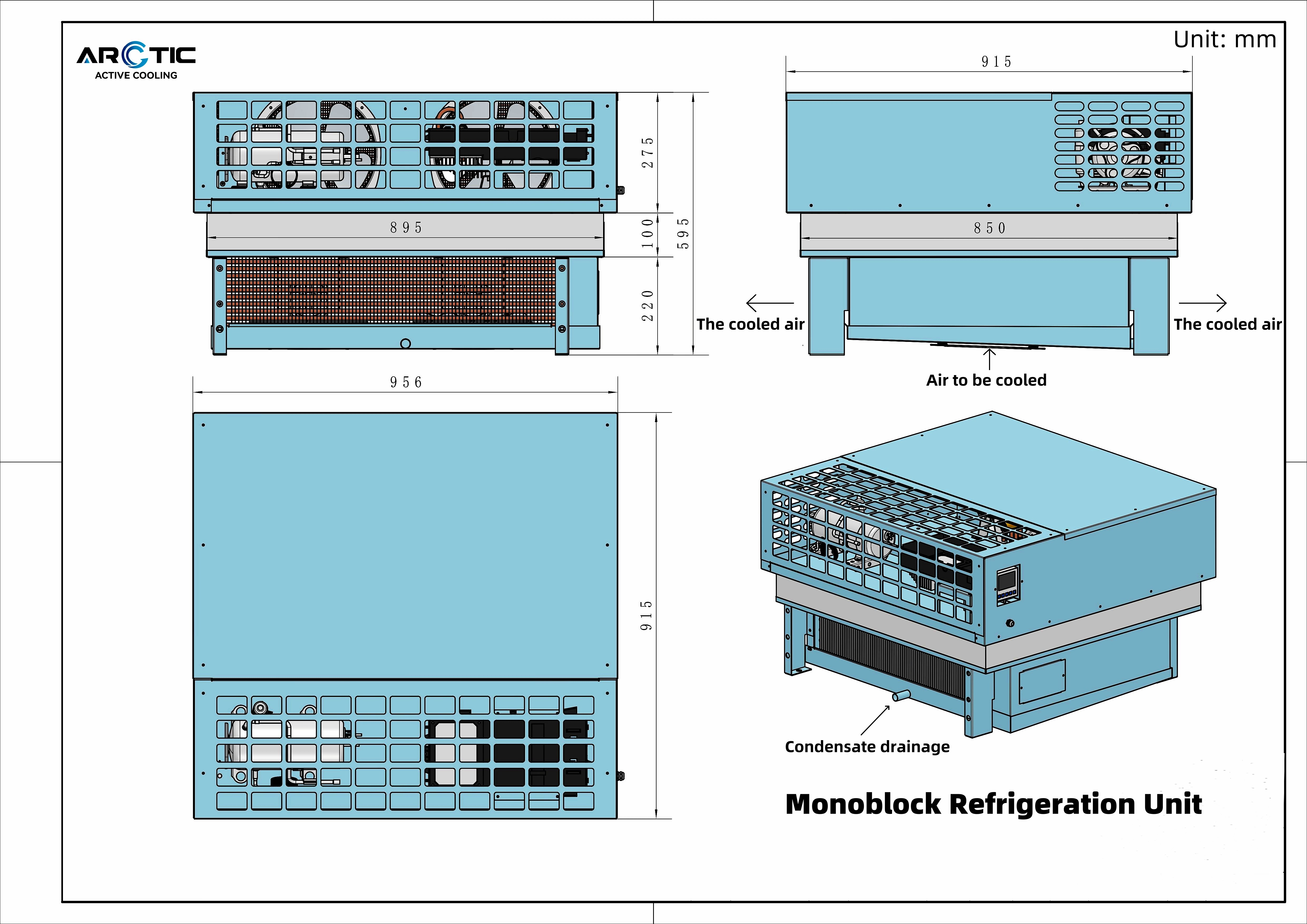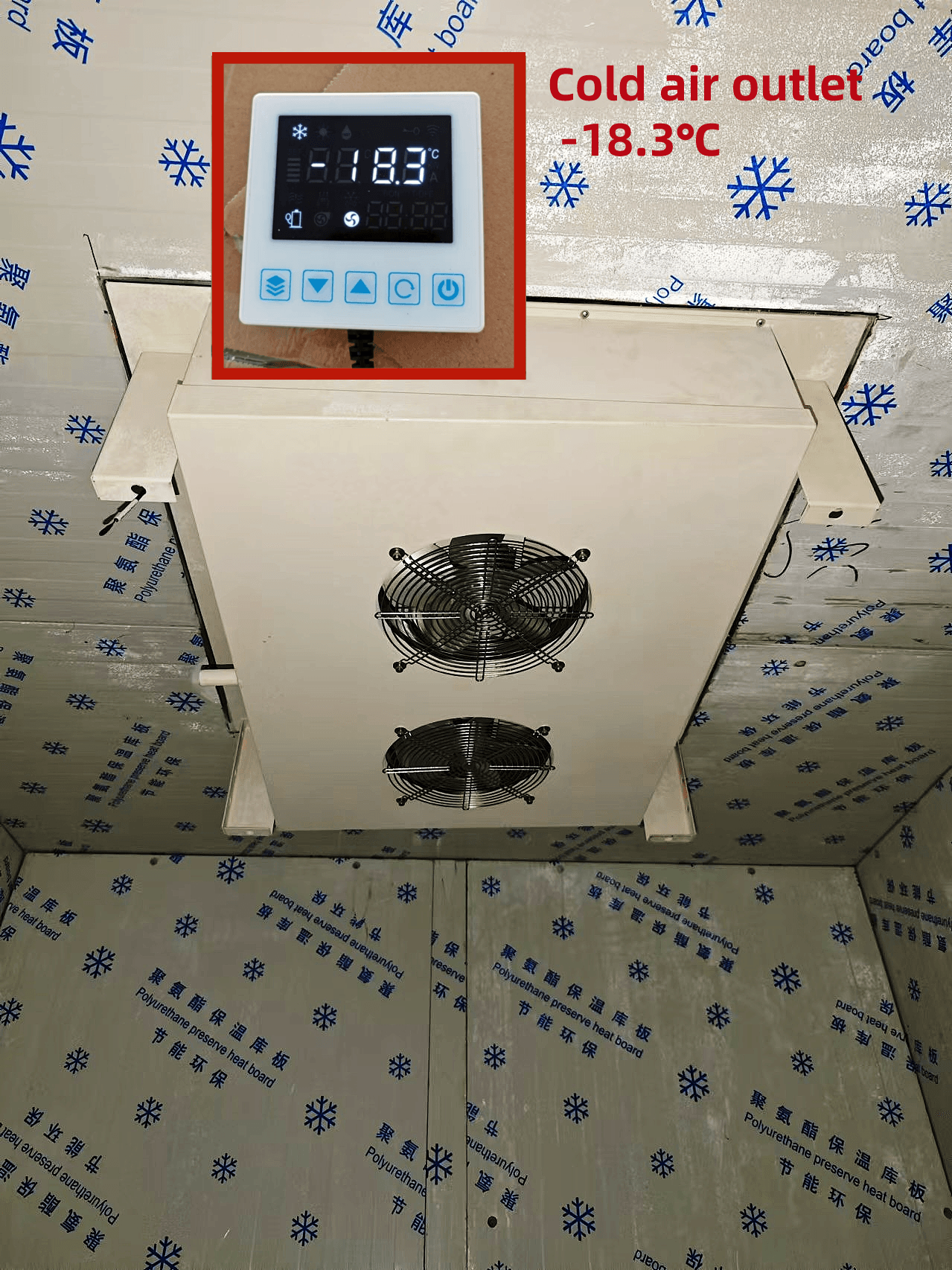Introduction

"Arctic Active Cooling. Endless Possibilities. We capture new technologies in mobile and compact cooling. Full-size cooling in a miniature design, customized to make your device stand out with innovative thermal management."
Understanding the Meat Freezer Room
A meat freezer room is specifically engineered to maintain low temperatures for preserving various types of meat products. Unlike standard freezers found in homes, these rooms are tailored for bulk storage and efficient organization, allowing for optimal airflow and temperature regulation. By utilizing advanced cooling technologies, such as the Arctic Active Cooling Top-Mounted Monoblock Refrigeration Unit, businesses can achieve consistent temperatures crucial for maintaining meat quality.
Essential Features for Cold Storage
When considering cold storage solutions for meat, several key features come into play to ensure maximum preservation. Temperature control is paramount; ideal conditions typically range between -10°F and 0°F (-23°C to -18°C). Additionally, proper insulation and humidity control systems are vital components that prevent freezer burn and spoilage while promoting longevity in stored products.
Meat Freezer Room vs. Cold Room
You might wonder: what is the difference between a freezer and a cold room? While both serve to preserve food items at low temperatures, their functionalities diverge significantly based on intended use cases. A cold room generally maintains higher temperatures suitable for short-term storage or processing of meats, whereas a dedicated meat freezer room provides sub-zero environments essential for long-term preservation without compromising quality or safety.
What is the Difference Between a Freezer and a Cold Room?

Key Definitions Explained
A meat freezer room is specifically designed for long-term storage of meat at sub-zero temperatures. Typically kept below 0°F (-18°C), these rooms ensure that meat remains frozen solid, thereby preventing spoilage and extending shelf life. In contrast, a cold room for meat processing operates at slightly higher temperatures—usually between 32°F (0°C) and 50°F (10°C)—to facilitate short-term storage while preserving freshness without freezing.
Understanding these definitions sets the stage for recognizing how each option serves its purpose in the realm of food preservation. A freezer locks in flavors while halting bacterial growth entirely, whereas a cold room maintains an environment conducive to aging or preparing meats without compromising quality. These distinctions are vital when considering how best to store your products.
Functional Differences
The functional differences between freezers and cold rooms are significant when it comes to their applications in meat storage solutions. Freezers operate on refrigeration cycles that keep temperatures consistently low enough to freeze food solidly; this makes them ideal for long-term storage needs where items may not be accessed frequently. Conversely, cold rooms are designed with airflow systems that promote even temperature distribution while allowing for easier access—perfect for businesses that need quick turnover of fresh products.
Moreover, freezers often have limited space compared to larger cold rooms which can accommodate more extensive inventories without sacrificing organization or accessibility. This flexibility allows businesses dealing with high volumes of meat processing or retailing to optimize their operations efficiently. Understanding these functional nuances can help you determine which option best suits your specific requirements.
Ideal Use Cases
So what are the ideal use cases for each? For those operating within restaurants or butcher shops looking at short-term inventory management or display purposes, utilizing a cold room is often recommended due to its optimal temperature range that keeps meats fresh while remaining accessible throughout service hours. On the other hand, if you're running a large-scale operation like wholesale distribution where items need extended preservation periods before sale—your go-to solution would be investing in a dedicated meat freezer room.
Additionally, if you’re wondering Can you store meat in a cold room?, rest assured that yes—you absolutely can! Just be mindful of temperature regulations depending on what type of product you're handling; certain meats may require specific conditions not provided by standard refrigeration alone. When evaluating your options for effective Meat Cold Storage Solutions, consider these use cases carefully as they will significantly impact your operational efficiency and product quality over time.
What is a Cold Room for Meat Processing?

Overview of Cold Rooms
Cold rooms are specialized storage areas that maintain specific temperature and humidity levels suitable for preserving various types of meat. They function not only as storage space but also as critical environments where meat can be processed, aged, and stored without compromising quality. So, what is the difference between a freezer and a cold room? While freezers operate at lower temperatures primarily for freezing items solid, cold rooms allow for more nuanced temperature control tailored to different stages of meat preservation.
Design Considerations
Designing an effective cold room for meat processing involves several key considerations. First and foremost is ensuring proper insulation to maintain consistent temperatures without excessive energy consumption—no one wants their energy bills skyrocketing! Additionally, airflow must be carefully managed to prevent hotspots or uneven cooling; this is where advanced systems like Arctic Active Cooling Top-Mounted Monoblock Refrigeration Unit come into play with their innovative design tailored for optimal performance in commercial settings.
Benefits for Meat Storage
The benefits of using a cold room for storing meat are numerous and impactful on both quality and safety. By maintaining ideal conditions, you minimize bacterial growth while enhancing the flavor profile through controlled aging processes—perfectly tender steaks anyone? Furthermore, these spaces allow businesses to maximize efficiency by organizing inventory better; after all, knowing exactly where do you store meat in the freezer (or cold room) saves time during busy hours.
Can You Store Meat in a Cold Room?

Storing meat in a cold room is not only feasible but also highly effective when done correctly. Unlike traditional meat freezer rooms, which maintain consistently low temperatures, cold rooms can be tailored to various temperature requirements that suit different types of meat and storage needs. Understanding the nuances of what is a cold room for meat processing can help ensure optimal preservation and safety.
Meat Preservation Techniques
One popular method is vacuum sealing, which removes air from packaging to prevent oxidation and bacterial growth. Additionally, utilizing marinades or brines can enhance flavor while also acting as preservatives—perfect for those who appreciate both taste and longevity in their stored meats.
Another key technique involves proper temperature management; understanding what is the difference between a freezer and a cold room helps clarify that cold rooms often allow for more flexibility in temperature settings. For example, certain cuts of meat may benefit from being stored at slightly higher temperatures than typical freezing conditions, allowing enzymes to break down the muscle fibers for improved tenderness without risking spoilage. This flexibility makes meat cold storage solutions particularly valuable for businesses focused on quality.
Optimal Temperature Ranges
For effective meat storage in a cold room, it's crucial to maintain specific temperature ranges tailored to the type of meat being stored. Generally speaking, red meats should be kept between 32°F and 36°F (0°C - 2°C) while poultry requires slightly cooler conditions at around 28°F to 32°F (-2°C - 0°C). These optimal ranges ensure that microbial growth is inhibited while still allowing meats to retain their quality over time.
In comparison with traditional freezers that operate well below freezing point (typically around 0°F or -18°C), using a cold room allows for more nuanced control over temperature variations suited specifically for different types of meats. This adaptability not only enhances flavor but also extends shelf life without compromising safety standards—making it an ideal choice for butcheries or restaurants storing large quantities of fresh products.
Common Storage Mistakes
Even with the best intentions, mistakes can happen when storing meat in a cold room—or anywhere else for that matter! One common error is overcrowding; cramming too much into your space restricts airflow and prevents even cooling throughout the area, leading some cuts to spoil faster than others. It's essential to arrange items thoughtfully within your storage area so each piece has ample space around it.
Another frequent misstep involves neglecting proper labeling and tracking of stored items; forgetting when something was placed inside can lead you down the path of mystery meals! Regularly checking inventory not only keeps things organized but also ensures you're using older products first—a concept known as FIFO (First In First Out). Lastly, failing to monitor humidity levels may compromise quality; too much moisture can cause freezer burn even in colder environments like those found within specialized meat freezer rooms or advanced systems like Arctic Active Cooling Top-Mounted Monoblock Refrigeration Unit designed specifically for such applications.
Where Do You Store Meat in the Freezer?

Storing meat in a freezer can be a bit of an art form, especially if you're trying to maintain quality and safety. A well-organized meat freezer room is essential for ensuring that your meats remain fresh and safe to eat. Whether you're a home cook or running a commercial kitchen, understanding the best practices for meat storage is key to maximizing your resources.
Best Practices for Freezer Organization
To optimize space in your meat freezer room, it's important to categorize your meats by type and cut. This not only makes it easier to find what you need but also helps maintain the integrity of each product by preventing cross-contamination. For instance, keep poultry on one shelf, beef on another, and pork separately; this organization can significantly enhance efficiency when you’re preparing meals or managing inventory.
Additionally, utilize clear bins or containers that allow you to see what's inside without having to dig around—nobody wants a frozen surprise! Make sure that air can circulate around packages; this promotes even freezing and prevents freezer burn. Remember: organization isn’t just about aesthetics; it’s about maintaining quality and ensuring food safety.
Labeling and Tracking
Investing in a labeling system can save you time during meal prep as well as reduce waste from forgotten items at the back of the freezer. Consider digital solutions like apps or spreadsheets if you're dealing with large quantities—this way, you'll always know exactly what’s in your meat freezer room without having to play detective!
Rotating Stock for Freshness
Rotating stock is crucial for maintaining freshness within your meat storage solutions. The first in, first out (FIFO) method ensures that older items are used before newer ones are added into your inventory. This approach not only minimizes waste but also guarantees that you're consuming products at their peak quality—a win-win situation!
When organizing meats in your freezer room, place newer items at the back and older items at the front so they’re easily accessible. Regularly check dates on packages as part of your routine maintenance—this will help prevent any surprises when it's time for dinner! By implementing these practices alongside advanced equipment options like Arctic Active Cooling's Top-Mounted Monoblock Refrigeration Unit designed specifically for cold rooms, you'll be able to maintain optimal temperatures while keeping everything organized.
Meat Cold Storage Solutions

Advanced Equipment Options
In today's market, there are numerous advanced equipment options designed specifically for meat cold storage solutions. From high-capacity freezers to specialized cold rooms, each piece of equipment serves distinct purposes in preserving meat quality. Knowing what is a cold room for meat processing will guide you in choosing the right features, such as temperature control, humidity regulation, and airflow management.
For instance, some advanced freezers come equipped with smart technology that monitors temperatures in real-time, ensuring optimal conditions for storing various cuts of meat. These innovations not only enhance food safety but also contribute to energy efficiency—an essential factor for any business aiming to reduce operational costs. Ultimately, investing in state-of-the-art equipment ensures that your meat freezer room maintains its integrity while providing exceptional preservation capabilities.
Arctic Active Cooling Top-Mounted Monoblock Refrigeration Unit: Advanced Cooling for Cold Rooms
One standout option in the realm of meat cold storage solutions is the Arctic Active Cooling Top-Mounted Monoblock Refrigeration Unit. This innovative unit is engineered specifically for commercial refrigerators and freezers as well as small to mid-sized cold rooms, making it versatile and effective across various applications. Achieve unparalleled efficiency and reliability with Arctic Active Cooling’s advanced technology that meets modern cooling demands while prioritizing performance and sustainability.
The design of this refrigeration unit allows for easy installation and maintenance without compromising on cooling power or energy consumption. By utilizing this advanced cooling solution in your meat freezer room or cold room setup, you ensure consistent temperature levels crucial for safe meat storage practices. With its robust construction and user-friendly features, this unit stands out as an optimal choice for businesses focused on maintaining high standards of food safety.
Customizable Storage Systems
Customizable storage systems offer another layer of flexibility when it comes to organizing your meat freezer room or cold room effectively. These systems can be tailored to accommodate different types of meats while maximizing space utilization—essential in facilities where every inch counts! Understanding where do you store meat in the freezer becomes second nature when you have adjustable shelving options that cater specifically to your inventory needs.
Additionally, customizable systems often incorporate modular designs that allow businesses to reconfigure their setups as needed without significant investment in new infrastructure. This adaptability not only enhances operational efficiency but also ensures compliance with evolving food safety regulations regarding how long different types of meats can be stored at specific temperatures—the key question being: can you store meat in a cold room? With these customizable solutions at hand, you're better equipped to manage stock rotation effectively while maintaining freshness across all products.
Conclusion

In wrapping up our exploration of the meat freezer room and its vital role in meat preservation, it's essential to highlight some best practices that ensure optimal functionality. Understanding the differences between a freezer and a cold room is crucial for maximizing storage efficiency. By implementing effective strategies, you can maintain the quality and safety of your meat products.
Best Practices for Your Meat Freezer Room
To make the most out of your meat freezer room, organization is key. First, ensure that you store different types of meat separately to avoid cross-contamination—this practice not only enhances food safety but also allows for better inventory management. Additionally, regularly checking temperatures and ensuring your equipment is running smoothly will help maintain ideal conditions; after all, nobody wants to discover their prized cuts have thawed unexpectedly!
When considering what is a cold room for meat processing, remember that it’s not just about temperature but also about airflow and humidity control. Proper air circulation prevents frost buildup while maintaining consistent temperatures throughout the space. Finally, always label your stored items clearly; this simple step can save you time and prevent any mix-ups when you're ready to cook or sell.
Ensuring Meat Safety and Quality
Ensuring meat safety starts with understanding how long you can store different types of meats in both freezers and cold rooms. For instance, while beef can last up to a year in the freezer at 0°F (-18°C), poultry has a shorter lifespan—only about six months before quality begins to decline. Being aware of these timelines allows you to rotate stock effectively; where do you store meat in the freezer? Always keep older items at the front for easy access!
Moreover, knowing how low temperatures affect bacteria growth is crucial when considering whether you can store meat in a cold room effectively. Cold rooms typically operate at slightly higher temperatures than freezers but are still designed to inhibit bacterial growth significantly if managed properly. Regularly monitoring conditions ensures that your stored meats remain fresh without compromising safety standards.
Future Trends in Meat Cold Storage Solutions
Looking ahead, there are exciting advancements on the horizon for meat cold storage solutions that promise enhanced efficiency and sustainability. One such innovation is Arctic Active Cooling's Top-Mounted Monoblock Refrigeration Unit—engineered specifically for commercial needs with an eye on performance and convenience! These advanced cooling units are revolutionizing how we think about what is the difference between a freezer and a cold room by blending technology with practicality.
As businesses increasingly prioritize sustainability alongside efficiency, expect more customizable storage systems tailored specifically for various types of meats as well as other perishable goods within these environments. The future may also see smarter technologies integrated into cold storage solutions—think IoT-enabled sensors that monitor temperature fluctuations in real-time! With these developments on the rise, maintaining high standards in your meat freezer room will become easier than ever.
